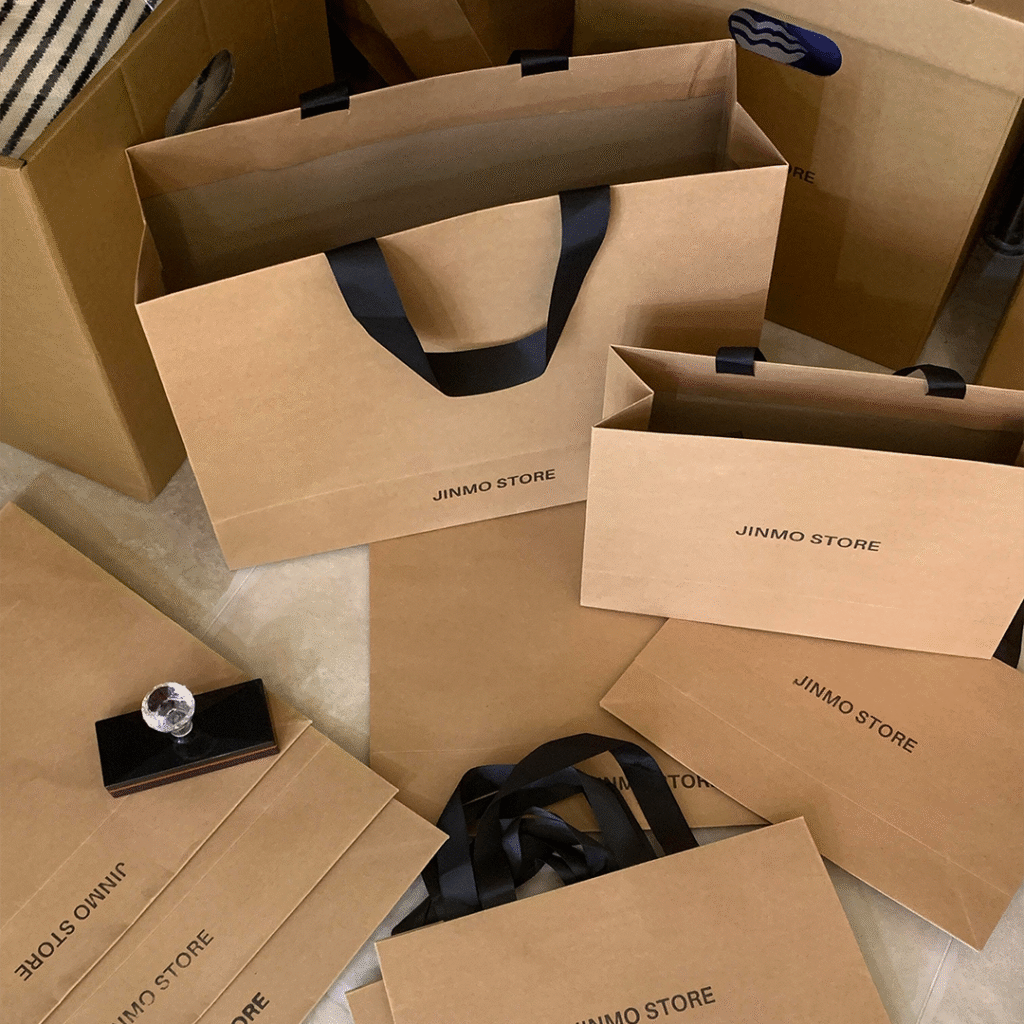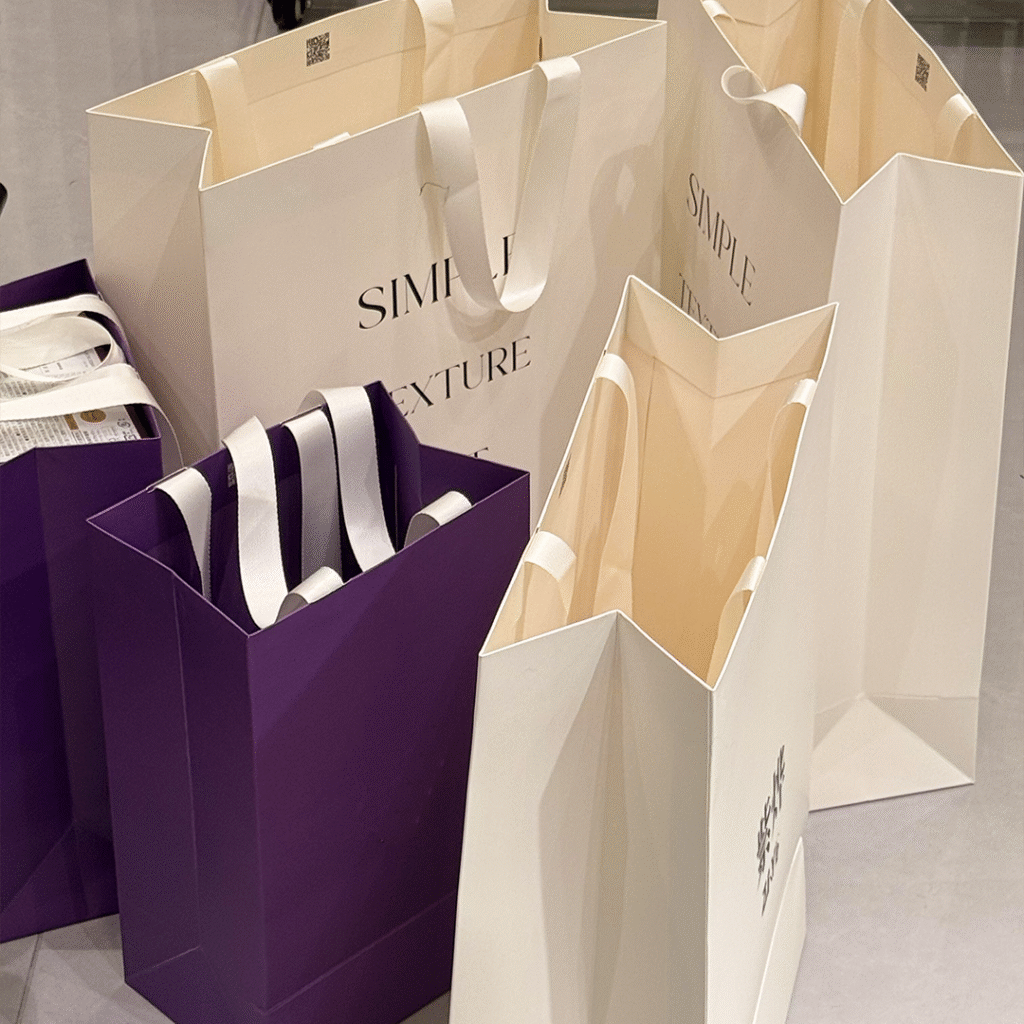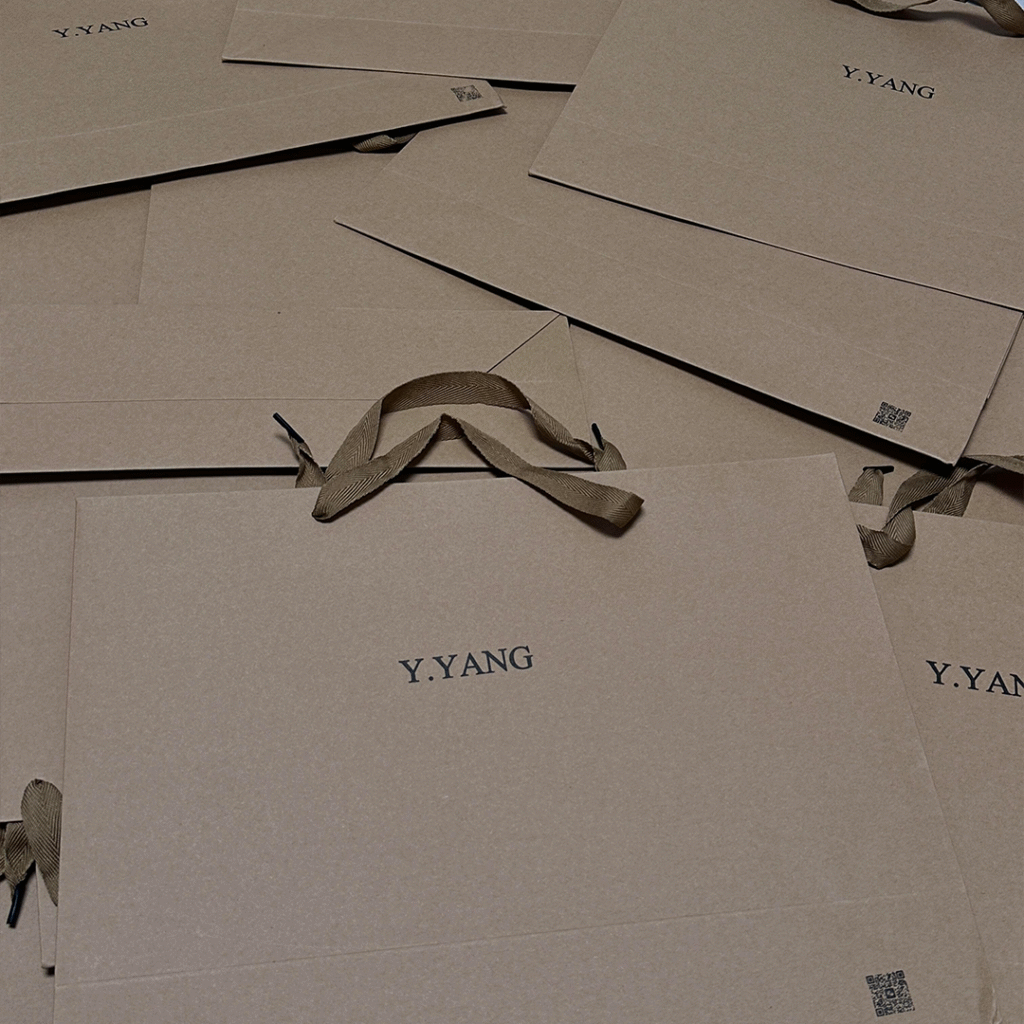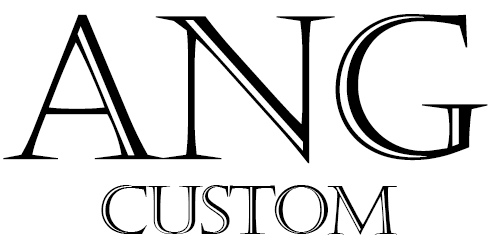Kraft Paper Bags vs. Cardstock Bags: Which Fits Your Clothing Brand Best?
Maria, who runs a small clothing shop in Portland, stood in front of two stacks of bags last month: one of thick, brown kraft paper, the other of crisp white cardstock. She sold both linen dresses and tailored blazers—and couldn’t decide which bag worked for both. “The kraft feels cozy, but will it hold a blazer without creasing?” she asked. “The cardstock is sturdy, but will it clash with my soft dresses?”
If you’ve ever stared at bag options wondering “which matches my clothes?”, you’re not alone. Kraft paper bags and cardstock bags both work for clothing retail—but they shine in totally different scenarios. The right pick depends on your brand’s vibe, the fabrics you sell, and how customers use the bag. Below’s how to compare them, with real shop examples, plus where wrapping paper bags and printed paper bags fit in.


Kraft Paper Bags: Best for Casual, Natural, or Eco-Focused Clothing Brands
Kraft paper bags have that warm, tactile feel—think unbleached brown, slight texture, and a “lived-in” vibe. They’re perfect if your clothes lean casual, natural, or sustainable (linen, denim, cotton, hemp).
Why a Linen Shop Loves Them:
A Brooklyn linen brand sells flowy dresses and oversized shirts, all in earthy tones. They swear by kraft paper bags—140gsm thick (sturdy but not stiff) with jute handles. “Our customers buy our linen because it feels ‘real,’” says the owner. “The kraft bag matches that—no shiny plastic, no bright colors. It just feels like an extension of the dress.”
They also use printed paper bags for their limited-edition collections: same kraft base, but with subtle hand-drawn floral prints (matching the dresses’ patterns) in water-based ink. “The print doesn’t overpower the kraft’s texture,” she adds. “It just gives customers a little extra joy when they pick up their order.”
When to Skip Kraft:
If you sell formal wear (evening gowns, tuxedos) or clothes with a sleek, modern vibe—kraft’s casual texture will feel out of place. A wedding dress boutique tried kraft bags once and got complaints: “The gown felt fancy, but the bag felt like a grocery sack.”

Cardstock Bags: Best for Formal, Structured, or Luxury Clothing Brands
Cardstock bags are thick, rigid, and crisp—usually white, black, or neutral. They hold their shape, stand upright on their own, and feel polished. They’re ideal for structured clothes (tailored suits, blazers, formal dresses) or luxury brands where “sleek” matters.
A Menswear Boutique’s Go-To:
A Chicago menswear shop sells custom suits and wool coats, and they only use cardstock bags—200gsm white cardstock. “Our suits weigh 6-8 pounds, and we need a bag that doesn’t sag,” says the manager. “The cardstock stands up, so the suit’s shoulders don’t get crushed when a customer carries it. It also looks sharp—matching the suit’s tailored fit.”
For holiday gift orders, they pair the cardstock bags with wrapping paper bags: thin, patterned wrapping paper (in navy or plaid) tucked inside the cardstock bag, so the suit feels like a “gift” without the wrapping getting crushed. “Customers love that it’s not just a bag—it’s a little experience,” he says.
When to Skip Cardstock:
If your clothes are soft or slouchy (cashmere sweaters, oversized knits), cardstock’s rigidity will feel harsh. A knitwear brand tried cardstock bags and found customers avoiding them: “The bag felt too stiff next to our cozy sweaters—it was a weird contrast.”

3 Questions to Pick the Right Bag for Your Clothing Brand
You don’t need to overcomplicate it—ask these three questions, and the answer will be clear:
(1) “What’s the texture of my most popular fabric?”
If it’s soft/natural (linen, cotton, hemp): Go kraft.
If it’s structured/sleek (wool, suiting fabric, satin): Go cardstock.
(2) “How do customers carry my clothes?”
If they often carry multiple items (e.g., a dress + a scarf): Kraft’s flexibility works—you can fold the top over.
If they carry heavy single items (e.g., a coat, a 3-piece suit): Cardstock’s sturdiness wins—it won’t droop.
(3) “What’s my brand’s ‘vibe’ in one word?”
Casual/eco-friendly/cozy: Kraft.
Luxury/modern/formal: Cardstock.
A Quick Note on Extras: Wrapping & Printing
Neither kraft nor cardstock has to be “plain”—you can tweak them to fit your brand without losing their core vibe:
– For kraft: Add a small printed logo (water-based ink, not shiny) or a jute ribbon. The linen brand does this, and it keeps the bag feeling natural but not boring.
– For cardstock: Use a matte foil stamp (gold or silver) for logos—avoid bright prints that clash with the bag’s sleekness. The menswear shop uses silver foil, and it pops without feeling flashy.
And if you do holiday gift sets? Wrapping paper bags work with both: Tuck a small piece of wrapping paper inside a kraft or cardstock bag to add color—just make sure the wrapping’s pattern matches your clothes (e.g., floral for dresses, plaid for suits).
Wrapping Up
Maria, the Portland shop owner, ended up picking both—but for different things: kraft paper bags for her linen dresses, cardstock bags for her blazers. “I was overthinking it,” she laughs. “The key was matching the bag to the fabric, not trying to make one bag work for everything.”
That’s the secret: Kraft and cardstock aren’t “better” than each other—they’re just better for different clothes. Whether you go with the warm texture of kraft, the sharpness of cardstock, or pair either with printed paper bags or wrapping paper bags, the goal is simple: Make the bag feel like it “belongs” with the garment inside.
Need Expert Guidance?
ANG specializes in custom packaging for global fashion brands. Contact us for a free consultation Design and Samples.
